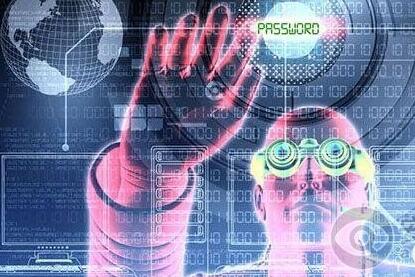As the "brain central nervous system" of industrial robots, artificial intelligence has been in a continuous high-speed development stage in the past few years. Many industrial robots have already possessed quite high intelligence characteristics, but they are far from the assumption of human beings. The degree of intelligence, Rome can not be built in a day, robots can not become very intelligent at once.
The real realization of industrial automation requires highly intelligent industrial robots to replace part of human work. Obviously, if you want robots to replace human work well, the first thing to do is to let them "see" Not only that, but many of the intelligent things we use in our daily lives also need to be seen, including intelligent drones and smart vacuum cleaners.

Of course, industrial robots are no exception. When industrial robots have the ability to observe things, they can judge things very well, so that they can solve some problems intelligently and flexibly, and under the great influence of Industry 4.0, intelligent manufacturing The requirements of industrial robots are also getting higher and higher. Traditional robots that are programmed to perform a specific action will no longer be able to meet the needs of the manufacturing industry.
In many cases, we will need robots to have more advanced functions such as identification, analysis, and processing. That is to say, we need to install a pair of "eyes" for industrial machines to replace the human eye for measurement and judgment. Machine vision is equivalent to loading industrial robots. The "eyes" allow them to clearly and tirelessly see objects and perform the functions of human eye inspection, which is very important in highly automated mass production.
The machine vision system can convert the ingested object into an image signal through a machine vision product, that is, an image capturing device, and transmit it to a dedicated image processing system to obtain shape information of the object to be captured, and convert it into information according to pixel distribution, brightness, color, and the like. The signals are digitized, and then the image system performs various operations on these signals to extract the features of the target, and then controls the device actions in the field according to the result of the discrimination.
In a nutshell, machine vision is the use of computers to simulate human visual functions. It has some functions of the human brain. It extracts information from the image of objective things, processes it and understands it, and finally uses it for actual detection in industrial intelligent manufacturing. Automated work such as measurement and control.
Intelligent manufacturing closely combines industrial robots with machine vision, and machine vision will be the next direction of artificial intelligence.
The machine vision industry is widely used and has four main functions:
1. Guidance and positioning, visual positioning requires the machine vision system to quickly and accurately find the part to be tested and confirm its position. The loading and unloading uses machine vision to locate and guide the robot arm to accurately capture.
In the field of semiconductor packaging, devices need to adjust the pickup head according to the chip position information obtained by machine vision, accurately pick up the chip and bind it. This is the most basic application of visual positioning in the machine vision industry.
2, appearance inspection: testing the quality of the product on the production line, this link is also the most replaced manual. In the field of medicine involved in machine vision, its main tests include size inspection, bottle appearance defect detection, bottle shoulder defect detection, bottle mouth detection and so on.
3, high-precision detection: Some products have high precision, reaching 0.01 ~ 0.02m or even u level, the human eye can not be detected must use the machine to complete.
4. Recognition is the use of machine vision to process, analyze, and understand images to identify targets and objects in various modes. Data traceability and collection can be achieved, and there are many applications in auto parts, food, and medicine.
In a nutshell, the machine vision system is characterized by increased flexibility and automation, mainly in the case of dangerous work environments that are not suitable for manual work or where artificial vision is difficult to meet. Machine vision is often used instead of artificial vision. In the mass industrial production process, manual visual inspection of product quality is inefficient and inaccurate, and machine vision inspection methods can greatly improve production efficiency and automation of production. Moreover, machine vision is easy to realize information integration, and is the basic technology to realize computer integrated manufacturing.
The rapid development of China's industrial robot industry has become the top of the world. The demand for industrial upgrading from the manufacturing industry to smart manufacturing, the huge scale of the manufacturing market, the promotion of the 2025 China manufacturing strategy and the numerous industrial layouts have created the “everyday and place for people†in the development of industrial robots. Wisdom factory, it can be said that the development of the robot industry is full of momentum, the demand for the entire manufacturing industry can not be underestimated, and the development of the industrial robot industry will certainly provide many opportunities for machine vision applications.
Metal Glasses,Metal Frame Glasses,Metal Eyeglasses,Retro Metal Frame Glasses
Danyang Hengshi Optical Glasses Co., Ltd. , https://www.hengshi-optical.com